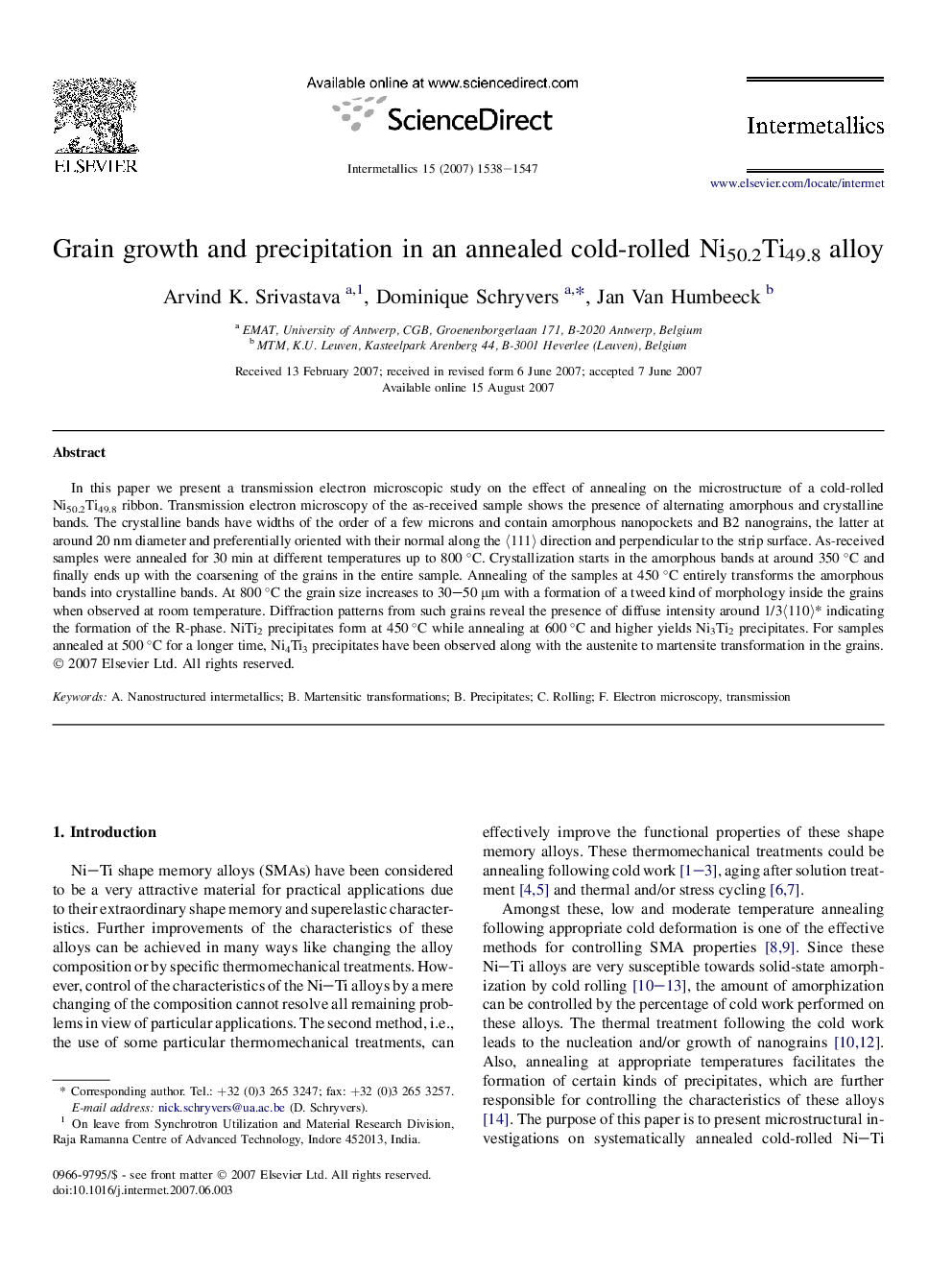| Article ID | Journal | Published Year | Pages | File Type |
|---|---|---|---|---|
| 1602108 | Intermetallics | 2007 | 10 Pages |
In this paper we present a transmission electron microscopic study on the effect of annealing on the microstructure of a cold-rolled Ni50.2Ti49.8 ribbon. Transmission electron microscopy of the as-received sample shows the presence of alternating amorphous and crystalline bands. The crystalline bands have widths of the order of a few microns and contain amorphous nanopockets and B2 nanograins, the latter at around 20 nm diameter and preferentially oriented with their normal along the 〈111〉 direction and perpendicular to the strip surface. As-received samples were annealed for 30 min at different temperatures up to 800 °C. Crystallization starts in the amorphous bands at around 350 °C and finally ends up with the coarsening of the grains in the entire sample. Annealing of the samples at 450 °C entirely transforms the amorphous bands into crystalline bands. At 800 °C the grain size increases to 30–50 μm with a formation of a tweed kind of morphology inside the grains when observed at room temperature. Diffraction patterns from such grains reveal the presence of diffuse intensity around 1/3〈110〉∗ indicating the formation of the R-phase. NiTi2 precipitates form at 450 °C while annealing at 600 °C and higher yields Ni3Ti2 precipitates. For samples annealed at 500 °C for a longer time, Ni4Ti3 precipitates have been observed along with the austenite to martensite transformation in the grains.
